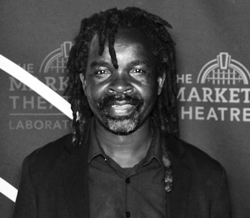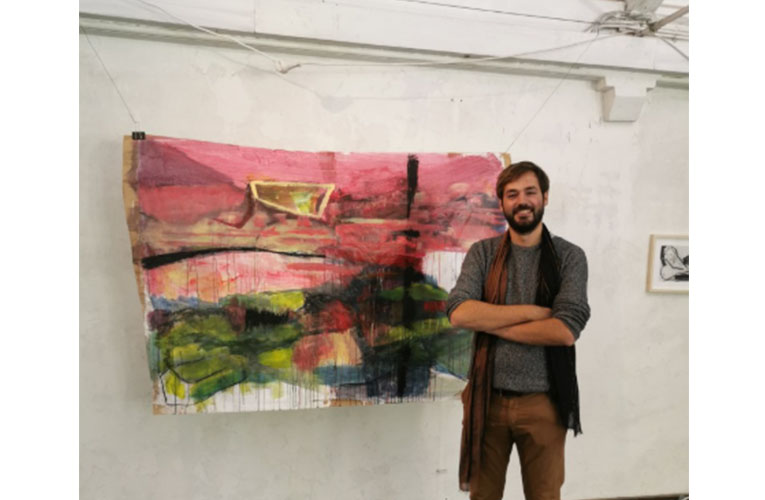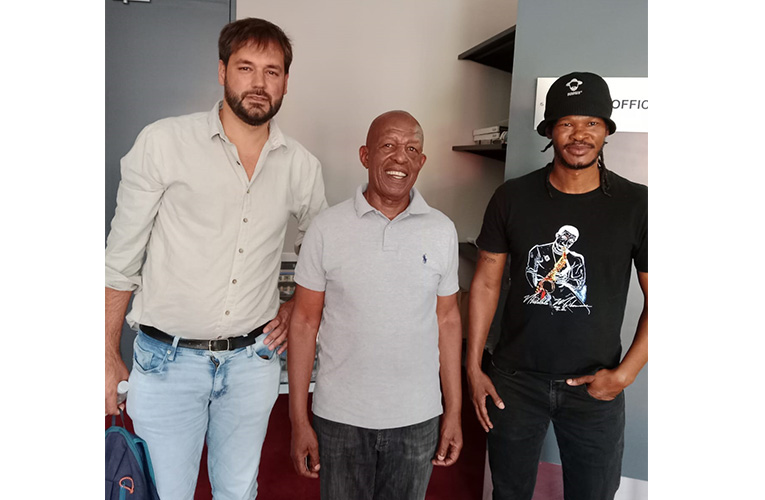Belgian artist and philosopher Joaquim Hernadez- Dispaux in South Africa this week gathering material for a book crafting a new narrative for the Global South
“Firstly, I approach the understanding of art and its various practices from a philosophy point of view, and secondly, I approach the understanding of philosophy from an art perspective. Art in reality can be applied to a number of disciplines, such as politics,’ he says
By Edward Tsumele, CITYLIFE/ARTS Editor

He has set out on an epic journey that he hopes by the end of it, he will change significantly how the Global North often imagines, sees and interprets the Global South’s artistic practices and narratives.
With 17 countries on his gaze, including some in Africa, philosopher, writer, artist and teacher 39-year-old Joaquim Hernadez- Dispaux, from Belgium, is currently on his Africa leg of this extensive journey of artistic exploration engagement and learning from artists in the global South. He is this week in South Africa engaging with South African visual artists, and by the time he leaves the country for his Tanzanian leg of the African leg of his tour, he hopes to have gathered enough material that will constitute part of the content of the book he is writing about the Global South’s artists and their art practices. But more importantly, Hernadez- Dispaux hopes to create a new narrative that is shaped and contributed to by the participating artists that he would have engaged with.
But in this research, he has also visited the US, engaging with artists there as well as Cuba, a country he says he found interesting, particularly its artists who “exude a lot of energy.”
“What I am looking forward to producing is a book that will educate Europeans about the artistic practices of others, particularly the Global South as currently the narratives of the Global South that dominates contemporary literatures is mainly from the perspectives of the Global North.
“I want to challenge that and reflect an alternative narrative about artists in the Global South. A narrative in which participating artists shape it. I am therefore engaging with individual artists in their intimate spaces, the studios in which they work, to hear them speak about their work, while all I do is listen, and do no interpretation of my own about their work and their artistic practices,” he told CITYLIFE/ARTS in an exclusive interview this week. He also explained that literature about art created in the Global South has a narrative that is imposed on it by writers from the Global North mostly, with the creators in this part of the world not being given an opportunity to shape that narrative as they understand it.
Having started on this journey in August 2024,, after taking a break from his teaching engaging at a technical institution in Belgium, where he teaches philosophy, the globe trotting philosopher, told CITYLIFE/ARTS that this tour is self-funded, and there is a good reason for that.

“I want to produce work that is independent of funders’ influence. Even the kind of artists I am engaging with on this tour, are artists working in their studios. A diverse group of artists in terms of emerging and established, young and old, female and male. Of course, engaging with institutions is part of the tour, but I keep that to the minimum as I want the narrative to be shaped by the artists themselves instead of the views of the establishment,” he stated boldly.
An artist himself who practices drawing and does screen printing, Hernadez- Dispaux told CITYLIFE/ARTS that his approach to art criticism is from two points:
“Firstly, I approach the understanding of art and its various practices from a philosophy point of view, and secondly, I approach the understanding of philosophy from an art perspective. Art in reality can be applied to a number of disciplines, such as politics,” Hernadez- Dispaux reasoned.
Even the choice of artists he speaks to on the tour are a result of personal references by other artists in the countries that he is visiting.
For example, before visiting South Africa, Hernadez- Dispaux was connected to Freddie Nyathela, the President of the Newtown based Non-Profit Organisation (NPO) the South African Roadies Association (SARA) by his uncle in Belgium Jean-Paul Dispaux who met Nyathela when he first visited South Africa in the early 1990s, and again met with in later years in Paris. Nyathela in turn connected Hernadez- Dispaux to Johannesburg based South African artist, Ntsikelelo Mzibomvu. Ntsikelelo is the one taking Hernadez- Dispaux around Johannesburg, introducing him to visual artists.
“So far, we have had meetings and engagements with Blessing Ngobeni, Cassius Khumalo, Phumzile Buthelezi and other artists at Elis House and August House. Hopefully we will be able to meet soon with Mary Sibande and Tonton Kabeya. Today (Tuesday, January 28, 2029) we intent to visit Bag Factory Artist Studios, and hopefully we will be able to chat to Pat Moutloa,” Nstikelelo told CITYLIFE/ARTS.
Hernadez- Dispaux, has also had an opportunity to watch a William Kendrige production, the South African globally recognized multi-media artist with whom he will also have an opportunity to engage with during this tour, he told CITYLIFE/ARTS.
Hernadez- Dispaux will fly out of OR Tambo on Sunday, January 2, 2025,heading to his next stop Tanzania, and after which he will travel to Kenya, Uganda, India, Colombia, and winding his tour in Vietnam, a full cycle.
Born of a Belgian father and a Belgian mother with Spanish roots, Hernadez- Dispaux publishes his books in French and so far, has four books behind his name.
“I hope to publish this new book whose title is Exposition UN: Verselle by May this year, and hopefully this book will have translations in both English and Spanish from the French language I write in.”
Hernadez- Dispaux who holds a PHD in philosophy has titled his tour Universal Exhibition, which by its end in Vietnam would have seen him visit 17 countries, most of them in the Global South. And hopefully Exposition UN: Verselle once out there will hopefully indeed shape a new and fresh narrative for the Global South, free from the often value judgment tainted literary perspectives of writers from the Global North.
That will be an important book especially because till in recent years when the global art gaze turned South, art from the Global South, particularly from Africa, was treated as some sort of second cousin to that of the Global North. That is at best, but at worst as a subject of curiosity by art critics and academics from the Global North..










